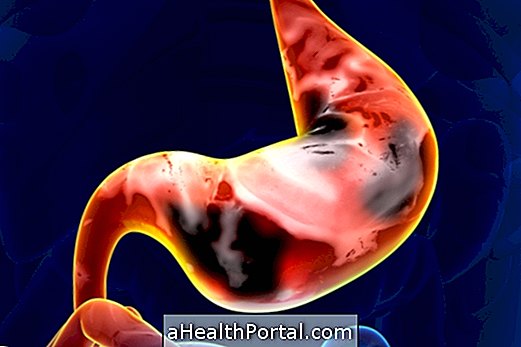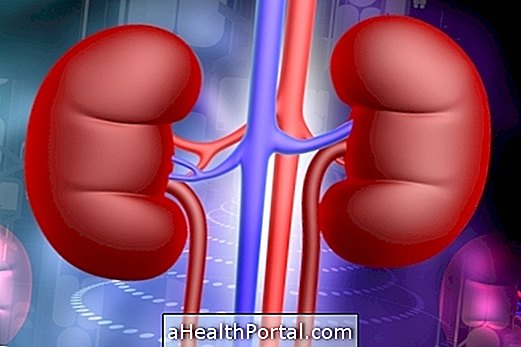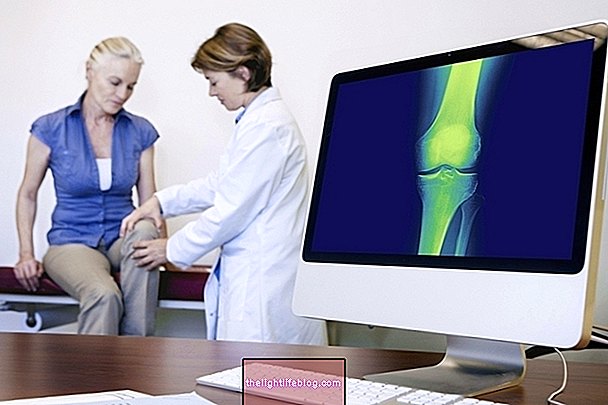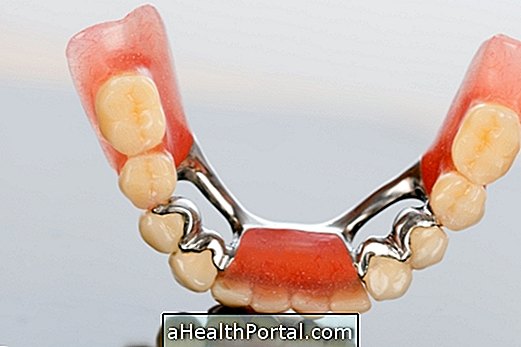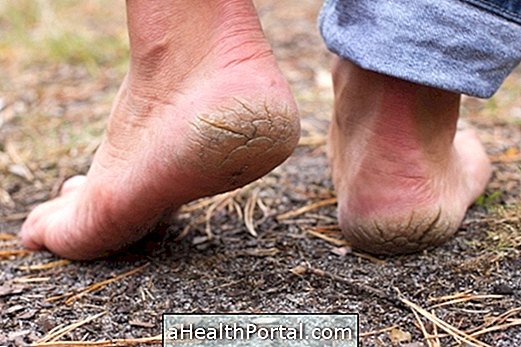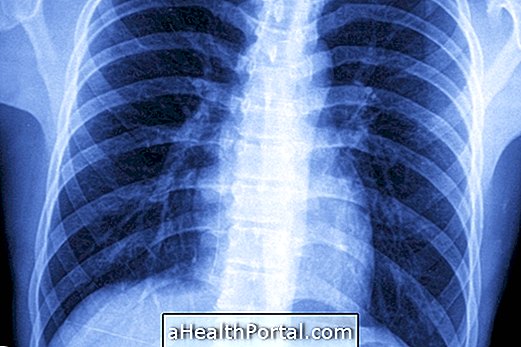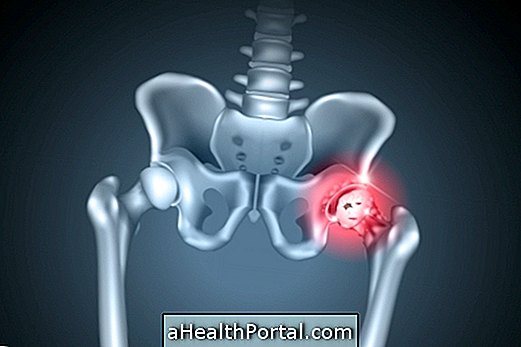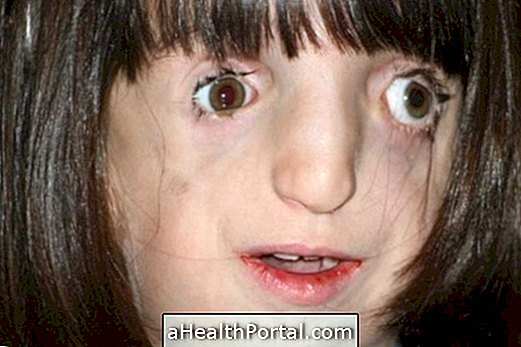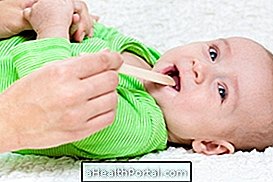Breast cancer is one of the major cancers that can target a woman, and is due to the multiplication of abnormal cells in the breast tissue, forming a malignant tumor, initially imperceptible, that can increase and reach other parts of the body.
Although in the early stages, breast cancer does not cause symptoms, the main sign that can indicate the presence of the tumor is the palpation of a hardened nodule, in addition to symptoms such as pain, redness or discharge from the nipples, for example. Breast cancer can be cured, but this varies according to the type and stage of the disease, so prevention is very important through self-examination and mammography.
Usually the treatment varies according to the extent of the tumor, and is usually done with treatments with surgery, chemotherapy and / or radiotherapy, immunotherapy, as well as medications to relieve symptoms that may arise, such as nausea or pain.

Main symptoms
In the earliest stages, breast cancer may not cause symptoms. As it grows and tumor cells multiply, some symptoms that may arise are:
- Appearance of a hard lump in the breast or near the armpit, which can be perceived through the touch and self-examination of the breast;
- Liquid outlet by the nipple when pressed, it may be blood;
- Different size or shape of the breasts, which did not previously exist;
- Having a swollen, red, hot, itchy breast ;
- A wound in the breast that does not heal and smells bad.
In addition, nodules may arise in the axilla, since the lymph nodes of these two regions communicate. Learn more details about the signs and symptoms to identify breast cancer in 11 symptoms of breast cancer.
How to confirm
Breast self-examination and mammography may raise the suspicion of breast cancer, however, confirmation is made after consultation with the mastologist, who will do a more detailed assessment of the nodule and examination and, if necessary, request tests that may be more specific, such as ultrasound, MRI or, if suspicion persists, a biopsy of the breast nodule.
Blood tests are also done to identify inflammation or tumor markers. Understand how and when to do the tests that confirm breast cancer.
In addition, genetic testing may be done in some cases to assess whether the cancer is caused by genetic mutations or to identify if there is a risk of this cancer when there are close relatives such as the father, mother, grandparents, uncles or siblings diagnosed with the disease. Check it out, too, when doing genetic testing for breast cancer.

What are the types of breast cancer?
There are several different types of breast cancer, depending on their development, some of which are more aggressive than others. The main ones are:
- Ductal carcinoma in situ - known as CDIS;
- Lobular carcinoma in situ - known as CLIS;
- Invasive ductal carcinoma known as ICD, which is about 80% of invasive or invasive breast cancers;
- Invasive lobular carcinoma known as CLI;
- Inflammatory breast carcinoma is an aggressive but very rare cancer.
In addition to these types of breast cancer, there are also others that are even rarer, such as medullary carcinoma, mucinous carcinoma, tubular carcinoma and malignant filoid tumor.
What are the risk factors
Some of the factors that increase the risk of developing breast cancer are:
- Be over 50 years old;
- Have previously had breast cancer;
- Have someone in the family with breast cancer, such as mother, sister or daughter;
- Family history of breast cancer in men;
- Genetic alteration of this type of cancer, especially in BRCA1 and BRCA2 genes;
- Have entered menopause after age 55;
- Obesity and overweight;
- Sedentary lifestyle;
- Consumption of alcoholic beverage;
- Frequent exposure to X-rays or other forms of radiation;
However, any woman can have this type of cancer. To know more details about some of these factors and how to avoid it, check out who has the most risk of having breast cancer.
How is the treatment done?
The treatment for breast cancer depends on the severity and stage of the cancer and therefore the oncologist can choose one or the combination of several treatments. It is available through SUS, at the city's oncology centers, as well as can be done in a particular way.
Usually, interventions with chemotherapy, radiotherapy and surgery for tumor removal are used, and the order of treatment depends on the conditions under which the tumor was diagnosed. Surgery is also variable, and all or part of the breast can be removed, and removal of the axilla lymph nodes may be necessary if they have been reached.
After surgery, in some cases, treatment may be continued as a way to try to eliminate or prevent the progression of the disease, which also depends on the characteristics and severity of the tumor. To know how is the postoperative of the surgery, check how recovery is after the removal of the breast.
Breast cancer in men
Breast cancer can also occur in man, although it is very rare, with the symptoms being similar to breast cancer in women and there is a greater chance of cure when it is discovered early.
There are several types of breast cancer, such as ductal carcinoma in situ or invasive ductal carcinoma for example, and usually the treatment includes chemotherapy, radiation therapy or even surgery to remove the tumor. Here's how the treatment is done in: Male breast cancer.

How to prevent breast cancer
The prevention of breast cancer is done by adopting a healthy lifestyle, thus reducing the risk factors. Therefore, it is advised to have a healthy diet, with fruits, vegetables and vegetables, to practice regular physical exercises, to avoid the excessive consumption of alcoholic beverages and to eliminate the cigarette.
However, to effectively prevent this cancer, it is necessary to perform regular mammography. Ideally, mammography should be done annually between the ages of 50 and 69, but the guidelines indicate that this time can be extended up to 2 years between each examination, especially if the woman has no risk factor or breast change. Already women over 35 and risk factors should get mammograms every year.
In addition, it is also important to perform monthly breast self-examination 3 to 5 days after the end of menstruation. The importance of self-examination is always remembered in the annual government campaigns, known as October Pink. Understand the step-by-step how to do breast self-examination correctly.
Watch the following video and see how to do the self-examination and how to identify some changes that may arise:

Can Deodorant Cause Breast Cancer?
Apparently antiperspirant deodorants do not increase the risk of developing breast cancer, as there are no studies confirming that the substances used to produce these products cause cancer, contrary to some proven factors. These products have effect only on the glands that produce sweat, not affecting the mammary cells.

